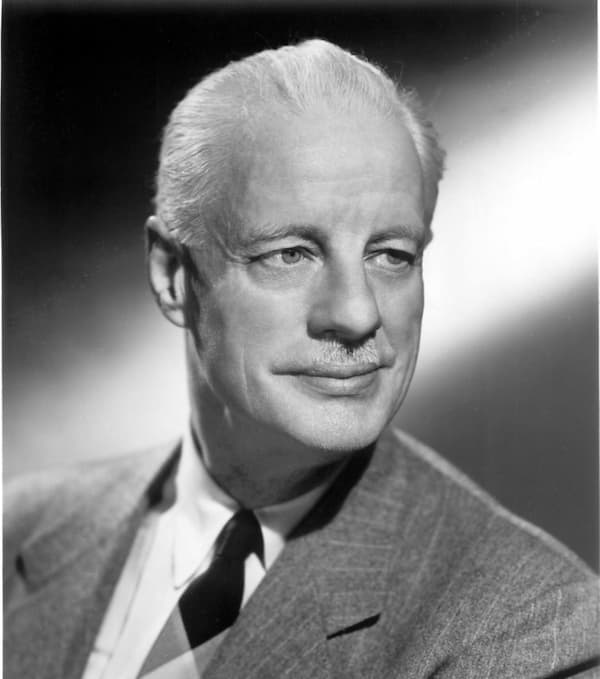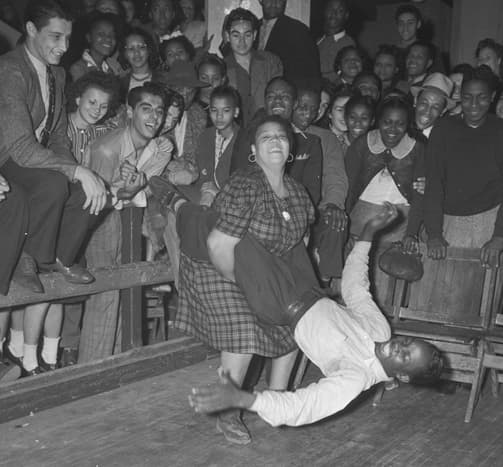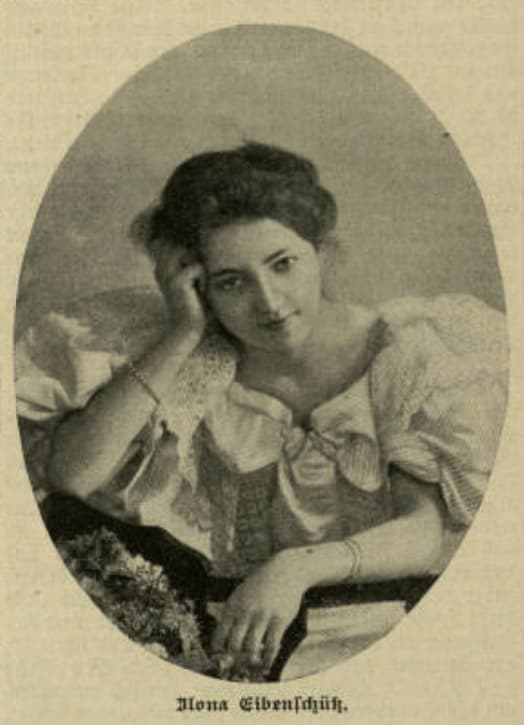Robert Russell Bennett, a serious composer but better known for his orchestration of over 300 Broadway and West End musicals, including Rodgers and Hammerstein’s Oklahoma and South Pacific, rose to a challenge issued by violinist Louis Kaufman. Kaufman thought that the ‘low-down’ music of the day, i.e., jitterbug and jazz, could be something in the hands of a ‘serious-minded composer’.

Robert Russell Bennett
Over a weekend, Bennett created Hexapoda: Five Studies in Jitteroptera. Jitterbug was a kind of swing dancing from the late 1930s and early 1940s, but with an emphasis on the physicality of the dancing.

Dancing the jitterbug, Los Angeles, 1939
Coming from the black dance halls of Pittsburgh, New York, and Los Angeles, jitterbug dancing was energetic and high-spirited. This cut from the 1941 film Hellzapoppin’ gives an idea of the sheer athleticism of the dancing. The dancers from Whitey’s Lindy Hoppers was a professional dance troupe that started in Harlem’s Savoy Ballroom but needed to disband as the men dancers were drafted into WWII.
Hellzapoppin’
As a composer, Bennett had an opera, Maria Malibran, seven symphonies, chamber works and five concertos to his credit. He was the fallback orchestrator for the leading Broadway composers of his day, from George Gershwin to Jerome Kern, Richard Rodgers, Cole Porter, Irving Berlin, and Jay Lerner, over a period of nearly 50 years.
Each movement has a different feel, starting with the shimmering repetitive Gut Bucket Gus.
Robert Russell Bennett: Hexapoda: 5 Studies in Jitteroptera – No. 1. Gut Bucket Gus (Arnold Steinhardt, violin; Victor Steinhardt, piano)
The second movement captures the frenetic energy seen in the Hellzapoppin’ video above with the skittering violin and stride piano style.
Robert Russell Bennett: Hexapoda: 5 Studies in Jitteroptera – No. 2. Jane Shakes Her Hair (Arnold Steinhardt, violin; Victor Steinhardt, piano)
The slow movement gives everyone a chance to catch their breath!
Robert Russell Bennett: Hexapoda: 5 Studies in Jitteroptera – No. 3. Betty and Harold Close Their Eyes (Arnold Steinhardt, violin; Victor Steinhardt, piano)
Stride piano returns while the violin jives above.
Robert Russell Bennett: Hexapoda: 5 Studies in Jitteroptera – No. 4. Jim Jives (Arnold Steinhardt, violin; Victor Steinhardt, piano)
The tense close of the night brings us Till Dawn Sunday.
Robert Russell Bennett: Hexapoda: 5 Studies in Jitteroptera – No. 5. Till Dawn Sunday (Arnold Steinhardt, violin; Victor Steinhardt, piano)
The work received its premiere at Carnegie Hall by its dedicatee, Louis Kaufmann, on violin with Bennett at the piano on 20 March 1940, with a repeat six months later with Jascha Heifetz on the violin (with Emanual Bay on the piano) as the closing work in a concert that included works by Mozart, Brahms, and Spohr, with the second half of the concert containing music by George Gershwin and Bennett.
No one else rose to the challenge of mixing the frenetic energy of jitterbug with classical music, and, in any case, jitterbug eventually fell away – first because of a 30% tax on nightclubs with dancing that was enacted in 1944 – but more due to the number of men out of the country on war service. Many were stationed in England, but dancing wasn’t as popular there as in the US. The remains of jitterbug transformed in the 1960s into dancing on pop television music-and-dance shows, such as American Bandstand in the US and Top of the Pops in the UK, but nothing seems to match what the true jitterbugger could do!
For more of the best in classical music, sign up for our E-Newsletter



Thank you for spotlighting these out-of-print pieces, which some of each new generation’s fine violinists seem to discover. Much could be said about how Louis Kaufman’s dual classical-commercial career paralleled Russell Bennett’s—they met in Hollywood in the mid-1930s. Kaufman made *the* first recording of the now-ubiquitous Vivaldi Four Seasons and premiered many a new violin work while making his living as soloist and section leader for hundreds of films (Casablanca, Gone with the Wind, you name it). No Hollywood concertmaster has had such a concert-hall presence since, and though the work of concert-hall concertmasters is mostly ephemeral, Mr. Kaufman’s screen work continues to be heard by hundreds of millions worldwide.